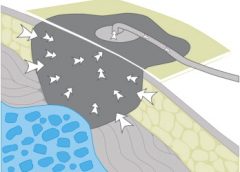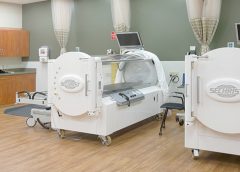
A letter from one of our own
I am writing this letter to share the sense of honor and privilege I felt in working with the National Alliance of Wound Care and Ostomy (NAWCO) to organize the first Eastern Region WCC Conference during the Fall of 2013. What an experience! In addition to representing a top-notch organization, I increased my knowledge of wound care and its products dramatically and met many amazing clinicians on the same journey.
Traveling from seven states and a wide variety of care settings, nearly 100 wound care clinicians came together with the common goal of enhancing their ability to make a difference in the lives of their patients. We launched the process of forming a vital clinician network that will allow us to share product and procedure information and experiences, leverage the information in our individual care settings, and strengthen the wound care knowledge of our peers.
Throughout this experience, I talked with dozens of local wound care product representatives. Like the clinicians, they provided a wealth of wound care insights. I encourage clinicians to reach out to these “best friends” of wound care and take advantage of their depth of knowledge.
I am passionate about advocating proper wound care, and if I can help disseminate wound treatment knowledge to other clinicians in support of their patients, I need no better reward.
Finally, the opportunity to represent NAWCO filled me with pride because of the respect I have for its vision. I believe in the importance of continuing education, furthering knowledge, and ensuring expertise through a certification process that is based on solid, research-based wound care. My hope is to represent NAWCO in the future.
Thank you for this exciting opportunity!
Sincerely,
Janie Hollenbach, RN, WCC, OMS,
DAPWCA, FACCWS
NAWCO names new executive director
The National Alliance of Wound Care and Ostomy (NAWCO), the largest wound care and ostomy certification organization in the United States, is pleased to announce that Cynthia (Cindy) Broadus, RN, BSHA, LNHA, CLNC, CHRM, WCC, DWC, OMS, was named executive director effective February 1, 2014.
Ms. Broadus brings a wealth of experience and knowledge to the organization. She has excelled for over 2 decades in specialty nursing care, litigation, corporate management, and company development. She joins the organization at a time of exciting change and will be instrumental in achieving accreditation that will provide national and international recognition for NAWCO.
“I am excited to be a part of such a great organization and supporting the efforts of the close-knit community that makes up the NAWCO certificants,” Ms. Broadus says.
Read the full press release.
DISCLAIMER: All clinical recommendations are intended to assist with determining the appropriate wound therapy for the patient. Responsibility for final decisions and actions related to care of specific patients shall remain the obligation of the institution, its staff, and the patients’ attending physicians. Nothing in this information shall be deemed to constitute the providing of medical care or the diagnosis of any medical condition. Individuals should contact their healthcare providers for medical-related information.
Read More






